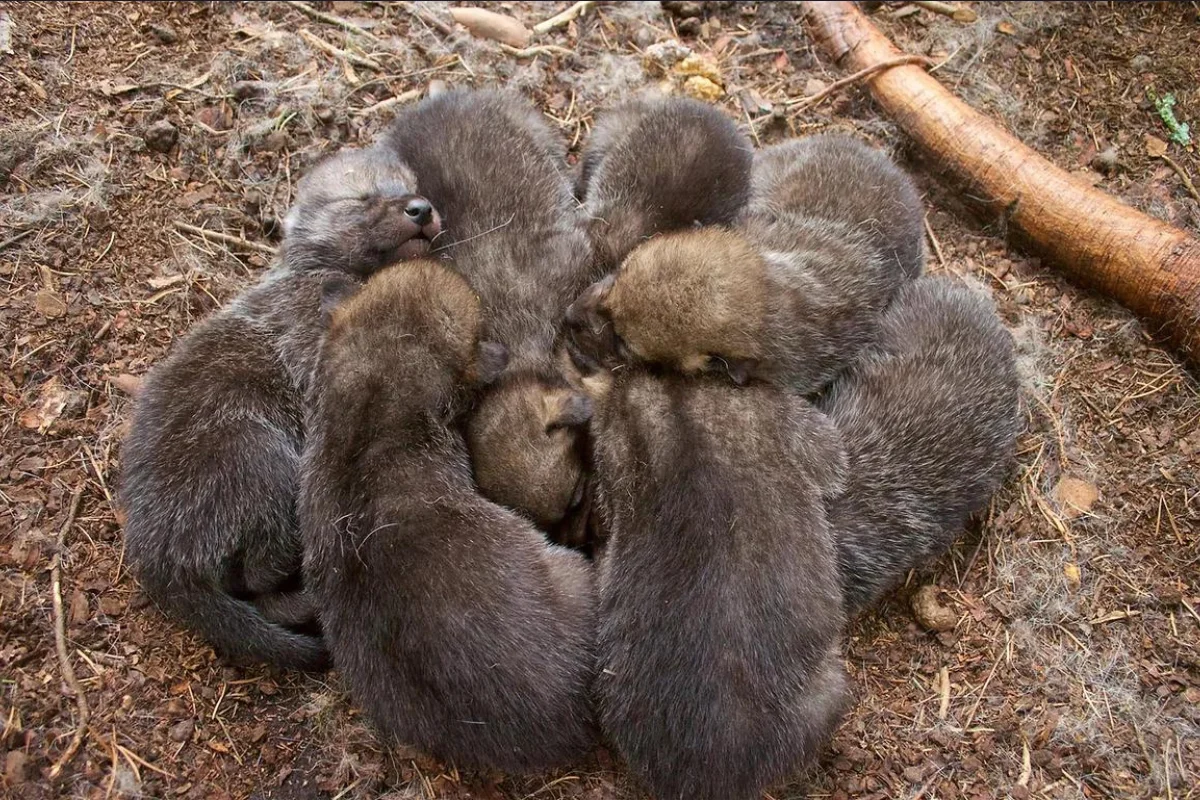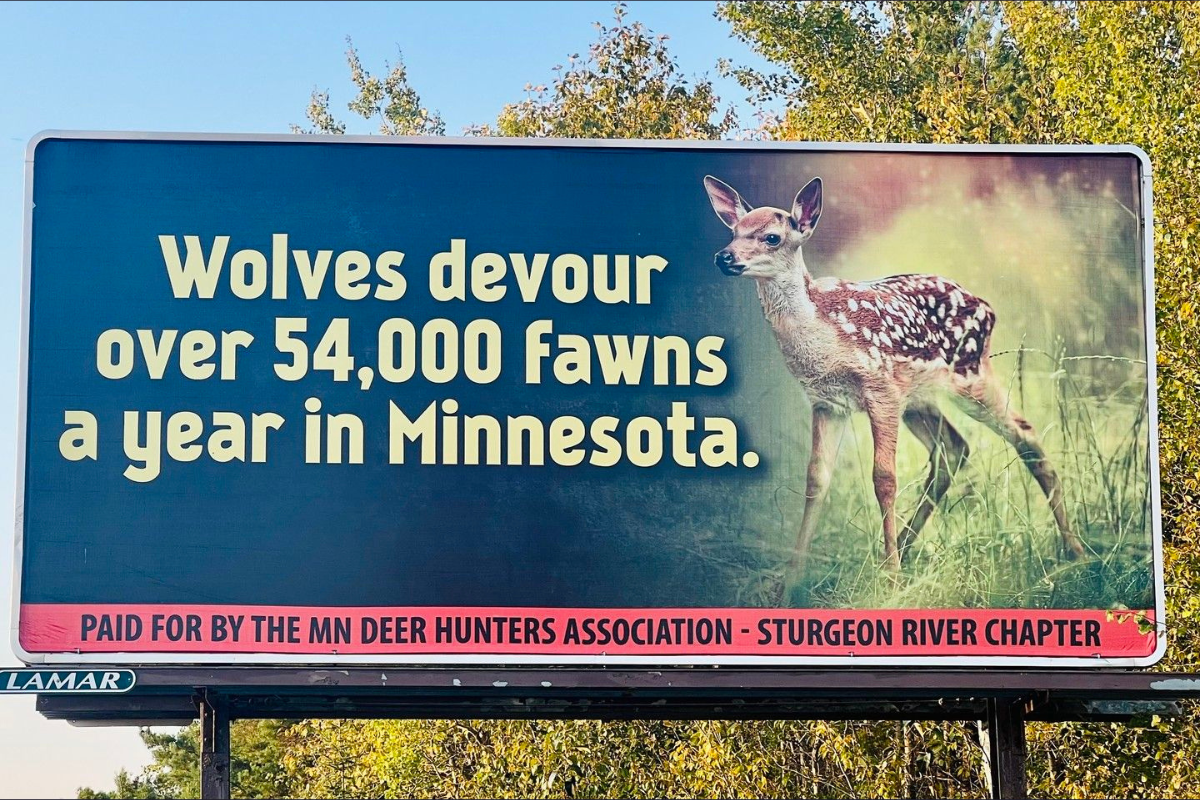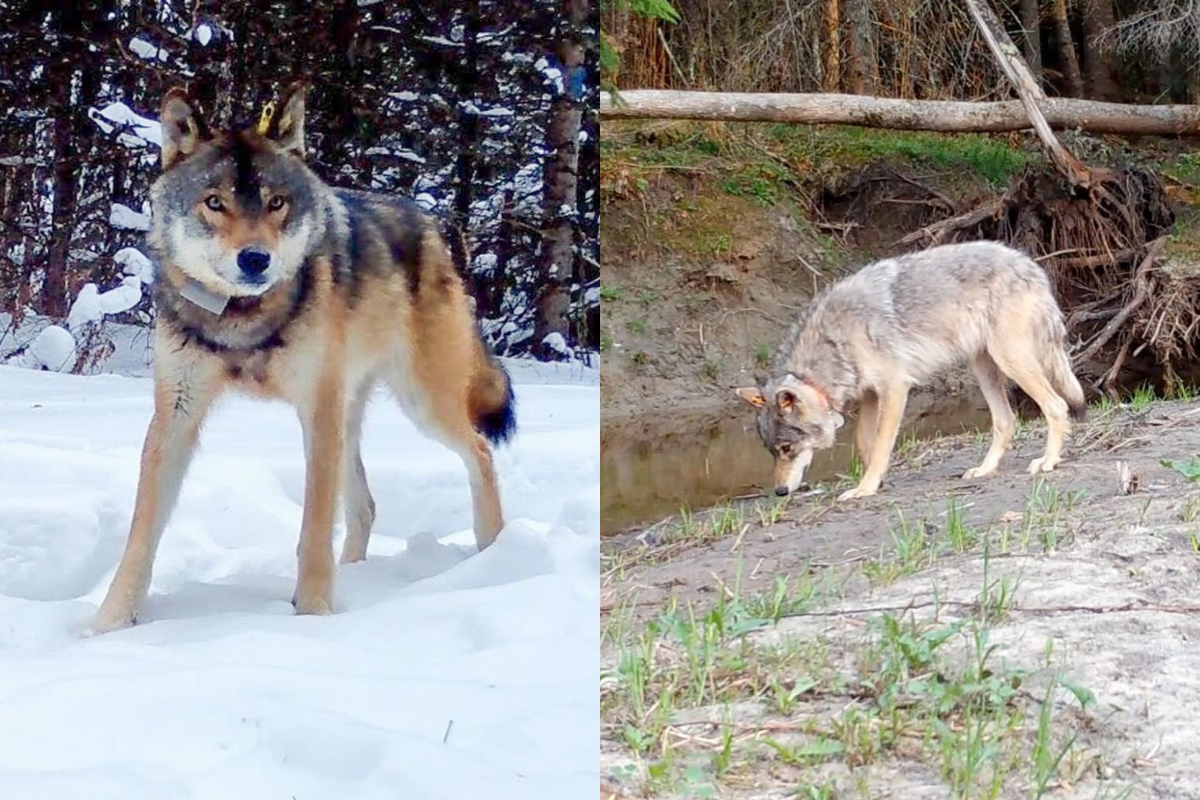Are Wolves Villains? The Voyageurs Wolf Project Uses Science to Break Biases
Wolves are making a big comeback across the U.S. The animal’s population continues to grow, leading to a demand for more research amid controversy over where the animal calls home. Anxieties for both ecosystems, farms, and humans are front and center. However, to wolf researchers, the expansion of wolves is a new opportunity to research and for people to learn.
Videos by Outdoors
People are fascinated by wolves. Viral videos online get thousands of shares as the “villain” of childhood stories now has a sustainable population in 10 U.S. states. Plus, a handful of other states have recently reported wolf sightings.
The Voyageurs Wolf Project
In a recent Instagram post, the Voyageurs Wolf Project shared footage of wolves hunting deer. The video from northern Minnesota would be nearly silent if it weren’t for the slight crunch of the snow as paws hurry through the wilderness. A short time later, a wolf remerges with blood on its face after successfully taking down the deer.
These trail-camera videos are an integral part of the research being done by the Voyageurs Wolf Project. The organization is working to learn more about the animals in the summer around Voyageurs National Park. The work aims to understand more about wolves while pushing more educational outreach to the masses.
Most research in places like northern Minnesota has occurred during wintertime, because it’s relatively easy to do, according to Thomas Gable, the project lead for the organization. “You can get up in an airplane, and you can find a wolf if it’s wearing a radio caller, and you can actually observe it from the air,” he says. “Summertime is a lot more difficult because it’s really densely forested.”

The research focuses heavily on how wolves hunt in the summer and pup rearing. The wolves stay busy feeding themselves and the new pups, eventually teaching the babies to hunt before the following winter.
Gable says trail cameras play an integral part in their work. It’s allowed them to have “a bunch of eyes in the woods,” as he puts it. The organization has captured videos of wolves foraging for items like berries and catching freshwater fish. Being able to document these with cameras makes their research easily backed by visual proof.
Voyageurs Keeps Calling the Wolves Home
The project’s research is unraveling mysteries about an animal that has called the area home for centuries. In fact, Voyageurs National Park is the only national park in the lower 48 states that never lost its wolf population. As debates about the reintroduction of wolves rage on in places like Colorado and California, the subspecies of timberwolves in Minnesota has always been there.
“Wolves were eradicated through most of the contiguous U.S., except basically a small sliver in northern Minnesota that includes Voyageurs National Park and a chunk of the Boundary Waters. That’s because they border Ontario and the Hudson Bay, which is a big source of the population of wolves in the area,” explains Gable. “So when people tried to eradicate wolves from the Voyageurs area, they might kill some, but then there was this sort of steady flow of wolves to come in and fill those spots.”
However, this doesn’t stop some people from trying to get rid of the wolves. Billboards have appeared in Minnesota claiming that wolves “devour over 54,000 fawns a year” in the state. The billboard is from a state hunting association.
The Fight to Protect Wolves Through Education

Signs like this are what Gable and his team at the Voyageurs Wolf Project are trying to avoid. They hope educating the public about the wolves and their essential role in the ecosystem will encourage people to leave the wolfpacks alone.
The project has taken a scientific approach in its response, determining whether or not hunting wolves will make a difference in the number of fawns in Minnesota and if the number of fawns killed is even a problem for the state’s ecosystem.
In a social media post, the organization offered this response:
“The evidence indicates that killing wolves will almost certainly have no impact on the number of surviving deer fawns. Fawns die from multiple causes, and the causes of mortality can compensate for one another . . . Put another way, if wolves and hunters don’t get them, then coyotes and bears will, and the same number of fawns will survive either way.”
This response is just part of the organization’s attempt to educate the masses. Rather than argue, they’re focusing on facts to determine whether wolf management is necessary in the state.
Wolf Anxieties While Hiking
Besides concerns for wildlife, the other anxiety usually boils down to human safety. Are hikers safe on trails in a place with wolves?

In the last 50 years, there has been only one fatal wolf attack in the U.S. Reports say a teacher on a jog in Alaska was killed by wolves. The exact details are unknown.
With this exception, human-wolf interactions are extremely rare, even as the animal’s territory grows into new states.
Gable says, for the most part, the animals try to stay away. However, he often hears from people who are worried about meeting a wolfpack face-to-face in the wilderness.
“If you see a wolf, enjoy it. It’s super rare to see one, and wolves are just not going to bother you at all,” says Gable. “We’ve had our whole field crew of eight who every day are in the field in the summer. We’ve never had an encounter that was even remotely bordering on something concerning.”
Staying Safe Around Wolves
With growing wolf populations in places like Yosemite, the National Park Service had these tips to keep wolves and people safe while enjoying the park:
- Never feed a wolf or any other wildlife. Do not leave food or garbage outside unattended.
- Treat wolves with the same respect you give any other wild animal. If you see a wolf, do not approach it.
- Never leave small children unattended.
- If you have a dog, keep it leashed.
- If you are concerned about a wolf—it’s too close or is not showing sufficient fear of humans—do not run. Stop, stand tall, and watch what the wolf does. If it approaches, wave your arms, yell, flare your jacket. If it continues, throw something at it or use bear pepper spray. Group up with other people, and continue waving and yelling.
- Report the presence of wolves near developed areas or any wolf behaving strangely.
Here’s how Bear Grylls handles wolves.
Source: https://outdoors.com/are-wolves-villains-the-voyageurs-wolf-project-uses-science-to-break-biases/







